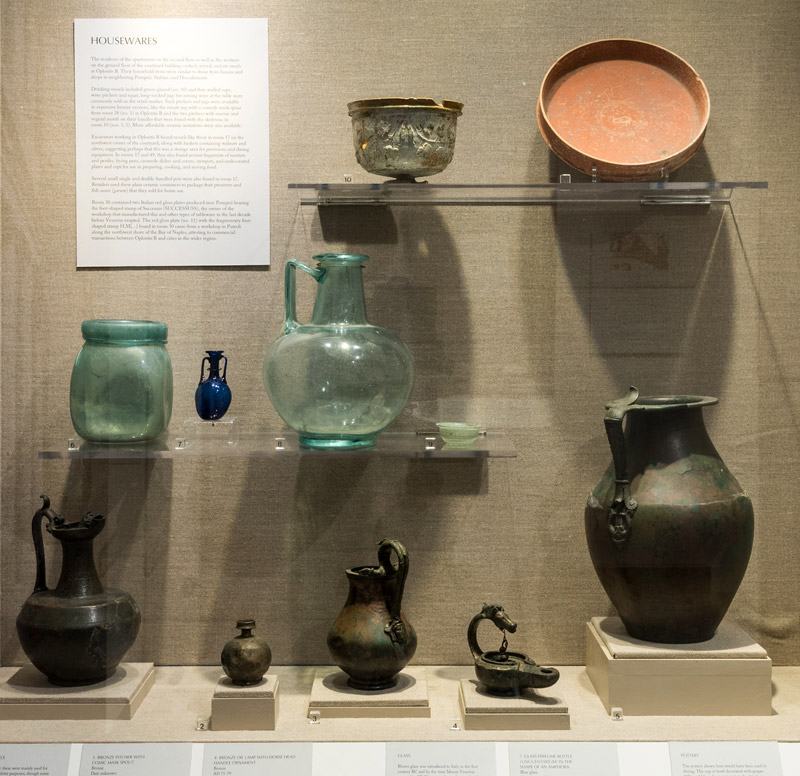Housewares

Bronze, ceramic, and glass vessels
The residents of the apartments on the second floor as well as the workers on the ground floor of the courtyard building cooked, served, and ate meals at Oplontis B. Their household items were similar to those from houses and shops in neighboring Pompeii, Stabiae, and Herculaneum.
Drinking vessels included green-glazed and thin-walled cups, wine pitchers, and squat, long-necked jugs for serving wine at the table were commonly sold on the retail market. Such pitchers and jugs were available in expensive bronze versions, like the ornate jug with a comedy mask spout from room 28 in Oplontis B and the two pitchers with marine and vegetal motifs on their handles that were found with the skeletons in room 10. More affordable ceramic imitations were also available.
Excavators working in Oplontis B found vessels like these in room 17 on the northwest corner of the courtyard, along with baskets containing walnuts and olives, suggesting perhaps that this was a storage area for provisions and dining equipment. In rooms 17 and 49, they also found several fragments of mortars and pestles, frying pans, casserole dishes and covers, stewpots, and undecorated plates and cups for use in preparing, cooking, and serving food.
Several small single and double-handled pots were also found in room 17. Retailers used these plain ceramic containers to package fruit preserves and fish sauce (garum) that they sold for home use.
Room 30 contained two Italian red gloss plates produced near Pompeii bearing the foot-shaped stamp of Successus (SUCCESSUSS), the owner of the workshop that manufactured this and other types of tableware in the last decade before Vesuvius erupted. The red gloss plate with the fragmentary foot-shaped stamp H.M[...] found in room 30 came from a workshop in Puteoli along the northwest shore of the Bay of Naples, attesting to commercial transactions between Oplontis B and cities in the wider region.

